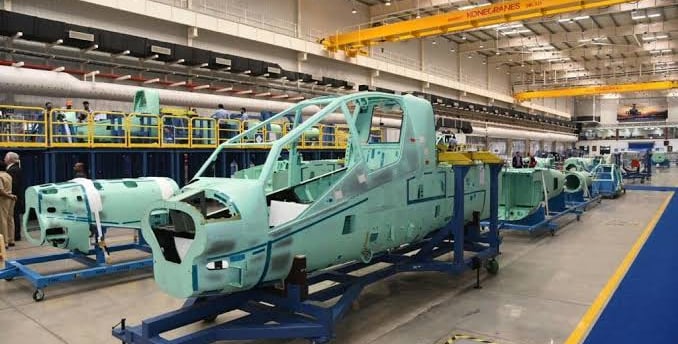Add your promotional text...
Navigating the Aerospace Sector: Boeing's Crisis and India's Ascending Market
Synopsis: As Boeing grapples with a severe production crisis, India emerges as a burgeoning aerospace market. With an aviation sector set to grow at a CAGR of 11.4% by 2029, India is becoming a key player on the global stage. This blog explores Boeing's current challenges, India's booming aviation market, strategic government initiatives, and the significant opportunities for investment in India's aerospace industry. Discover how these dynamics are reshaping the global aerospace landscape and positioning India for unprecedented growth.
INVESTMENT IDEAS
By Sameer Malhotra
6/14/20243 min read


The Unprecedented Boeing Crisis
Global aircraft manufacturing leader Boeing is grappling with a severe crisis. In May, the company received orders for a mere four new planes, a stark indicator of the current situation. This dramatic slowdown is largely due to an incident in January 2024, when a side panel of a Boeing 737 Max aircraft blew out mid-air. This event has severely impacted the company’s once thriving order book.
The crisis at Boeing, however, didn’t emerge out of nowhere. The company’s factory workforce has undergone significant changes in recent years. The pandemic led to the retirement of numerous experienced technicians, leaving a gap that has been filled by a new, less experienced workforce. As Boeing rushed to meet the escalating demand for new jets post-pandemic, the induction of these young employees has proven insufficient to handle the production challenges effectively.
The Indian Aviation Boom
While Boeing faces challenges, India is on the brink of becoming the world’s third-largest air passenger market by 2030, trailing only China and the United States. According to the international Air Transport Association (IATA), the Indian aviation market, valued at US$ 13.5 billion in 2024, is expected to grow to US$ 23.2 billion by 2029, reflecting a compounded annual growth rate (CAGR) of 11.4%.
No country Is buying more airplanes than India. Indian airlines such as Indigo, Air India, and Akasa Air have nearly 1,700 aircraft on order from Airbus and Boeing. This figure is projected to rise to about 2,000 by March 2025, according to aviation consultancy firm CAPA.
Government Support and Policy Initiatives
To harness this growing demand, Indian aerospace manufacturers are seeking government support through various policy initiatives. In return for the substantial orders placed with global aircraft manufacturers, the Indian government has proposed that these companies establish factories in India to support their global supply chains. These measures aim to streamline manufacturing processes, encourage research, and enhance skill development within the sector.
India’s cost-competitiveness, skilled workforce, and supportive government policies have positioned it as a crucial hub for aerospace production. Historically, the aerospace industry has been dominated by a few countries like the US, France, and the UK. However, rising labor costs and the need for diversification have led aerospace giants to explore alternative locations, with India emerging as a prime destination.
Strategic Partnerships and Expansion
The Make in India initiative received a significant boost when Air India placed substantial aircraft orders, prompting Airbus to expand its supplier base in India. Airbus plans to employ 5,000 people in India by 2025 and increase its manufacturing activities in response to the growing order book. Additionally, Airbus is collaborating with the Tata Group to establish a final assembly line for civil helicopters in India. Boeing has also increased its India-based sourcing of components and services to US$ 1.25 billion annually.
India’s aircraft fleet is expected to nearly quadruple by 2041 compared to 2020. The country is projected to receive over 90% of South Asia’s airplane deliveries, requiring over 2,500 new aircraft. The cargo market is also set to expand, with the fleet growing from 15 to 80 airplanes by 2042. Boeing’s 2023 ‘Pilot and Technician Outlook’ forecasts a demand in South Asia for 37,000 pilots and 38,000 maintenance technicians over the next 20 years, driven primarily by India’s growing needs.
Key Players in the Indian Aerospace Market
Despite the burgeoning opportunities, only a few companies are currently tapping into the aerospace market in India. For instance, Dynamatic Technologies recently secured a contract from Airbus to manufacture all doors for the A220 aircraft family. The company also supplies critical components like the flap track beam assembly for the A320 family.
Hindustan Aeronautics Limited (HAL) is another major player, renowned for its extensive experience in aircraft manufacturing. HAL has been pivotal in developing indigenous aircraft such as the Tejas Light Combat Aircraft (LCA) and the Advanced Light Helicopter (ALH). The company also provides aircraft upgrades, overhaul services, and manufactures critical components.
Three unlisted companies to watch are Tata Advanced Systems (TASL), Mahindra Aerospace, and the Aeronautical Development Agency (ADA). TASL has successfully delivered critical aerospace components and systems, including fuselages, wings, and avionics for various international programs. Mahindra Aerospace, part of the Mahindra Group, has rapidly established itself in the aerospace manufacturing sector with its production of the Airvan series of utility aircraft. ADA, under DRDO, oversees the development of the nation’s Light Combat Aircraft program.
Future Prospects and Investment Opportunities
The future of India’s aerospace sector looks promising as these companies continue to innovate and contribute to the global aerospace industry. The potential listing of Tata and Mahindra group aerospace companies could further expand the ecosystem of listed aerospace stocks in India, similar to the recent surge in railway stocks.
As India continues to grow its aerospace manufacturing capabilities, it stands to become a significant player on the global stage, offering vast opportunities for investment and development in the sector.
In conclusion, while Boeing navigates its current crisis, the Indian aerospace industry is poised for significant growth, driven by rising demand, strategic partnerships, and supportive government policies. The convergence of these factors is set to make India a key player in the global aerospace market in the coming decades.
